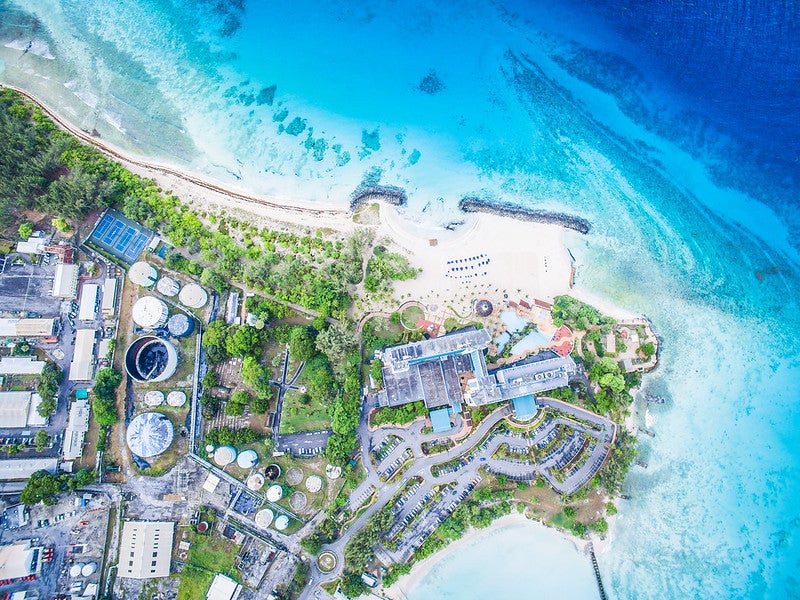The 2020 hurricane season reminds us of the importance of infrastructure services in limiting the spread of Covid-19. Natural disasters can damage infrastructure assets, such as health clinics, water pipes, and communication lines. This would prevent covid-19 patients from receiving care, hinder handwashing efforts, and delay contact tracing.
Extreme climate events that cause less damage to infrastructure assets could also contribute to the spread of covid-19. For example, blackouts during a heatwave could lead people to crowd into cooling centers where social distancing is not possible. The current era emphasizes that countries need infrastructure that is resilient to natural disasters and the future climate.
Resilience must be considered from the outset of the project cycle
The path to resilient infrastructure starts with a constructive regulatory and policy environment that incorporates resilience into every stage of the project cycle.
Considering resilience from the start–when all options are on the table–is much more efficient than trying to address resilience later in the process after factors such as location are already decided. Regulations can mandate that resilience is incorporated from the outset by conducting a thorough risk analysis early in the design and planning stages.
Governments can establish and enforce building codes to ensure that infrastructure meets minimum technical standards. These standards can be strengthened over time as technology advances and the climate changes.
Other policies can complement regulations in the infrastructure design and planning process. Policies can encourage research and development to drive innovations that lower the cost of building resilient infrastructure. Behavioral nudges can shift or lower demand for infrastructure services, lowering the requirements on infrastructure. At the end of the day, there will still be some risk. Countries can manage this risk using financial instruments, such as catastrophe (CAT) bonds, to share risk and finance rapid recovery.
Countries in LAC are already implementing these strategies. Chile updated its building codes in the wake of the 2010 earthquake. Mexico has a comprehensive strategy for managing financial risk from natural disasters including the Fund for Natural Disasters (FONDEN) and CAT bonds that were issued in 2009. Financial incentives for customers to reduce water use allowed a utility in Brazil to successfully navigate a drought. These examples illustrate that countries are moving toward regulations and complementary policies to achieve resilience.
Within this regulatory and policy framework, individual infrastructure projects also need to be designed with resilience in mind. Long lifespans mean that the climate and natural disasters to which an infrastructure asset is exposed may change over its operational lifetime. Similarly, the demand for infrastructure services that it must meet may shift as populations grow or shrink and incomes rise. This uncertainty should be formally incorporated into the infrastructure decision-making process.
One method of doing this is to invest in infrastructure plans that perform well under many possible future scenarios. Comprehensive analysis of thousands of possible future scenarios can identify infrastructure investments that are expected to pay off in any future scenario and that avoid extremely high-cost retrofits or disastrous disruptions in services.
As one example, SEDEPAL, the water utility in Lima, Peru, used these decision-making principles to develop an investment plan that ensures water reliability across a broad range of possible future scenarios. Analysis of 300 future scenarios identified “no regrets” investments and revealed USD 600 million of investments that could be forgone because they would not contribute to water reliability.
Investing in resilience infrastructure can bring substantial returns
Well-planned investments in resilient infrastructure assets pay off. Decisionmakers need to weigh the exposure of the infrastructure asset, consequences of disruptions in services, and the risk that is acceptable to users against the net costs of resilience. The key to achieving resilient infrastructure at an affordable cost is to be selective, basing investments on comprehensive analysis and developing contingency plans for cases in which increasing resilience isn’t justified.
With the need for LAC countries to rescue their economies and lay the foundations for a sustainable recovery, investing in resilient investment could prove essential to protect lives today and confront the climate crisis tomorrow.
Further reading
This blog is part of our “behind the scenes” series of posts for our 2020 flagship publication: From Structures to Services: The Path to Better Infrastructure in Latin America and the Caribbean
Well-planned sustainable infrastructure can spark economic recovery
“Green” won’t be enough for Latin America and the Caribbean’s recovery
Follow us on Twitter: @BIDCambioClima
Photo Credit: BID Ciudades Sostenibles – Flickr.com


Leave a Reply